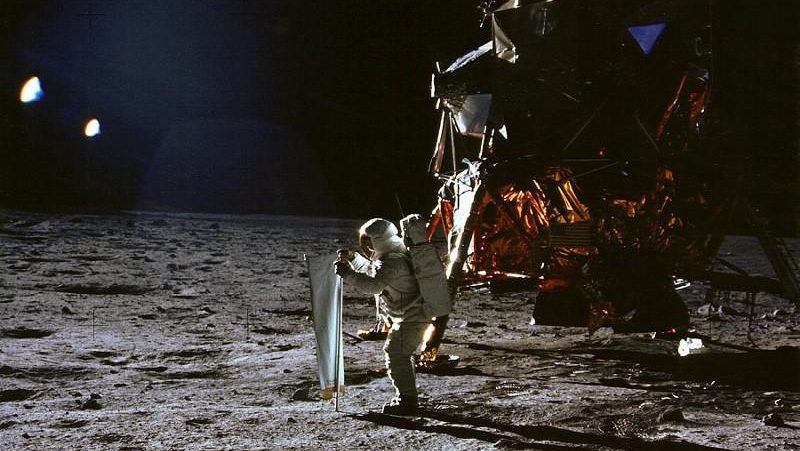Flying three missions to space, the now-retired astronaut Chris Hadfield took around 45,000 photos. He shares how difficult it is to take pictures in space when your day is highly structured. But the times you can do it – there’s a chance to capture something magical.
Chris Hadfield: Life on board a spaceship is so busy. People just don’t know. Mission Control schedules your time, there’s this line moving across your computer screen that shows what you’re doing every five minutes for your entire six months on a spaceship.
So it is a dictated and controlled environment up there, and nowhere does it ever say, “Go look out the window.” But you just can’t help yourself. Every time you get ahead of that line, if you give yourself an extra three or four minutes you float through the station on the handrails, you pull yourself down into the cupola window, and you take another look at the world.
And it is so many things all at once. It’s beautiful—it’s just raw, constantly changing beauty pouring by and around you.
It’s instructional: You learn so much about the world. You see how everything actually fits together, and the history of it, and the geology and the geography of it.
But it’s also a feeling of great privilege, of like awe, of like you’ve just walked into the most magnificent art gallery on earth, or into the Sistine Chapel, or into a rain forest or somewhere where suddenly you’re just overwhelmed with the place that you are. It’s an amazing stolen moment, and I stole as many of those as I could.
As astronauts we train more than anybody knows. I had photographers train me. I got qualified to not just use a 35 mm digital camera but Hasselblad cameras with 70 mm film and Aeroflex cameras—and I became an IMAX cameraman and helped make two IMAX movies—and Linhof cameras and the whole gamut of complex photography. With all of those photographers talking about not just portraiture and not just inside, but how to take a good picture of the world and what parts of the world we haven’t seen yet. Some places have a lot of cloud cover, and maybe one day you’ll get a great picture of the Panama Canal or a part of the Amazon that’s never been photographed because it’s always so cloudy.
So you are hyper-prepared to be one of the world’s photographers up there. You’re really trying to make sure that you’re technically competent with the camera, but you’re also artistically capable of understanding how to compose a picture, how to frame it properly, how to recognize something that’s worth taking a picture of.
And you don’t always get it right. I mean the National Geographic photographers, they take thousands of pictures for every one that makes it into the magazine. Same for us. But the world is a very generous photography subject, and you have the best tripod in existence, so it’s a great place to take pictures.
I was lucky enough to fly in space three times. I flew the Space Shuttle twice; I was the pilot of the Russian Soyuz on my third flight; I helped build two space stations; I’ve done a couple spacewalks. And throughout all of those 166 days in space, 2600 times around the world, every chance I could I would try and get to the window and take a picture, because who wouldn’t? It’s just too beautiful and rare a site to ignore.
And so when you total it all up after all of those spaceflights, including while I was outside on the spacewalks, I think I took about 45,000 pictures. And a lot of them are terrible, just things going by or the glare of the atmosphere or out of focus, you’re just trying to make sure that somewhere in there the pictures are good. And what do you do with 45,000 pictures? No one is going to sit down and look at them all.
So a couple of years after I returned from my third space flight I went through all 45,000 and as I went through the 45,000 I would flag oh yeah that’s a good picture, that’s a good picture, that’s a good picture. So I ended up with sort of a nice smaller subset of worthwhile pictures that should be looked at.
And then I thought, if someone was floating next to me at the window of the spaceship, what would I want to show them? If we were going around the world once, where would I want to go, “Hey! Look at that! Wait to you see this”?
“Wait till you see the great eye of the desert on the edge of the Sahara. Or wait until you see the Skeleton Coast ,or the border between the United States and Mexico, or all of the interesting parts of the world that are different than you expect to see.
And I went through all those pictures, the best pictures that I had taken, and chose 150 I thought that really showed the story of the world, and those are my absolute best. Trying to distill this whole planet down to 150 pictures is crazy, it’s an insult to the world, but it was the best I could do to let people actually see what the world looks like. I called it You Are Here: Around the World in 92 Minutes. But my whole thought at the time was, “If I had a good friend sitting next to me, what parts of the world should they see?”






